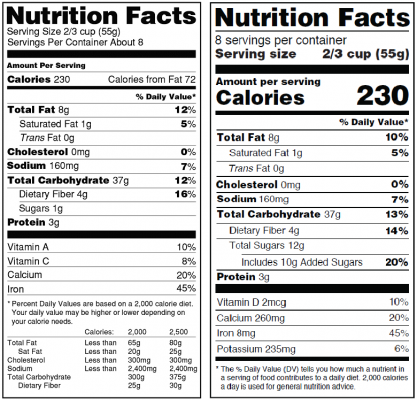FDA Continued Delay of Menu Labeling Rule Proves Unhealthy for Families
October 2, 2017 | Blog

Photo by Djenaba Figueroa
School is back in session which means planning healthy lunches and snacks for children to eat during the school day. In 2016, the FDA announced they were planning to release improved nutrition labels to make it easier for consumers to see what’s in the foods they’re purchasing. Unfortunately, there was a delay in production of these easy-to-read labels. Susan Jones, registered dietician, and nutritionist at Henry J. Austin Health Center in Trenton, NJ, and member of NJPHK-Trenton, penned this op-ed about just how detrimental a delay in production of these updated labels can be for consumers nationwide.
by Susan Jones, Registered Dietitian/Nutritionist at Henry J Austin Health Center
 Have you ever wondered how many calories are in your favorite fast food burger, breakfast sandwich, pasta entree or order of movie theater popcorn? Calorie information is available on many restaurant and food establishment menus and menu boards, but not on all. In 2010 Congress enacted the federal menu labeling law as part of the Affordable Care Act (ACA). The law included an FDA rule that directed all chain restaurants and other food establishments with more than 20 locations and similar menu items to post calorie information on menus and menu boards (and make additional nutrition information available upon request) where the public can easily access it.
Have you ever wondered how many calories are in your favorite fast food burger, breakfast sandwich, pasta entree or order of movie theater popcorn? Calorie information is available on many restaurant and food establishment menus and menu boards, but not on all. In 2010 Congress enacted the federal menu labeling law as part of the Affordable Care Act (ACA). The law included an FDA rule that directed all chain restaurants and other food establishments with more than 20 locations and similar menu items to post calorie information on menus and menu boards (and make additional nutrition information available upon request) where the public can easily access it.
As a nation, adults and children alike continue to struggle with health issues related to obesity, including but not limited to diabetes and heart disease and many are trying to make healthier food choices. This rule, which provides helpful consumer information, seems like a no-brainer. Unfortunately, the enforcement and compliance deadline has been postponed for the third time since it was issued in December of 2014. Most recently, the deadline for compliance was Friday, May 5, 2017, but has been pushed back once again to May 7, 2018.
Tom Price, the Secretary of Health and Human Services, said, “The FDA made the right decision to delay a rule that would have essentially dictated how every food service establishment in America with more than 20 locations — restaurants, grocery stores, movie theaters, and more — writes and displays their menus.”
As a Registered Dietitian/Nutritionist who sees the health effects of poor food choices every day, I fail to see how displaying critical information that provides consumer education about the food we are putting in our bodies is a problem. Every item we purchase on Amazon, as well as in Target or Walmart includes a description and specification of the product so consumers can make the correct purchase based on needs. How is the food that nourishes the body and soul of all Americans – especially our children – any different?
Since all food establishments have known the rule was going to take effect, many have already made this information available. We are grateful to those businesses that have taken the rule for what it is: information to allow the public to make an informed choice about their food purchase. So, next time you are in line for your burger or popcorn or ordering a meal at the Cheesecake Factory or Olive Garden, pay attention to the “specifications” available and make an informed decision on how to nourish your body.
Please note that calorie and nutrient levels on food labels/menus base everything on 2000 calories when providing information in percentages. Many busy families with children rely on prepared food on a regular basis. Be aware that an entrée, sandwich or bucket of popcorn will provide a much larger percentage of the caloric needs of a child than an adult. To make an informed nutrition decision, it is important to know how many calories are required for children and adults.
Let’s hope that this is the last time the deadline will be extended so that all consumers can make informed food choices.
Here are the 2015 to 2020 Dietary Guidelines for Americans estimate calorie needs for adults and children:
Calorie need estimates range from 1,600 to 2,400 calories per day for adult women and 2,000 to 3,000 calories per day for adult men. Within each age and sex category, the low end of the range is for sedentary individuals; the high end of the range is for active individuals. Due to reductions in the basal metabolic rate that occur with aging, calorie needs generally decrease for adults as they age. Estimated needs for young children range from 1,000 to 2,000 calories per day, and the range for older children and adolescents varies substantially from 1,400 to 3,200 calories per day, with boys generally having higher calorie needs than girls. These are only estimates, and approximations of individual calorie needs can be aided with online tools such as those available at www.supertracker.usda.gov.
USDA & HHS (U.S. Department of Agriculture and U.S. Department of Health and Human Services) (2015-2020) Dietary Guidelines for Americans, 2015, 8th edition.
SHARE:
Contact Us: 609-278-9622
Follow Us On: